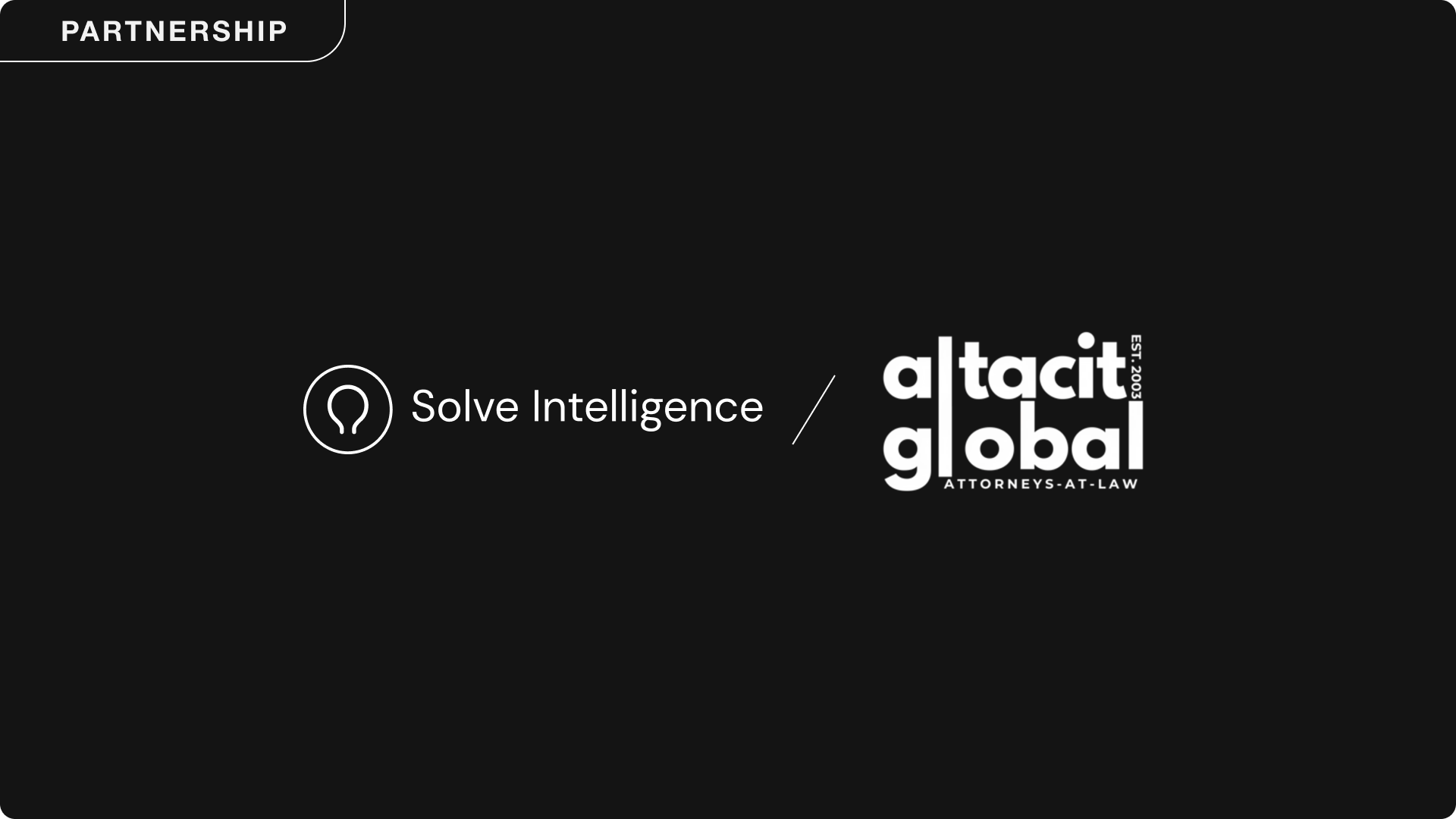Patent Attorneys at Solve Intelligence: Building AI for Patent Practice
At Solve Intelligence, we build AI tools for patent attorneys. This means a design philosophy of developing, testing and refining our platforms specifically with our end-users in mind. We recognize that in order to build the best AI tools for patent attorneys, patent attorneys themselves must be involved in the development process. Their domain expertise, combined with the advanced technical knowledge of our AI and engineering teams, ensures our Patent Copilot isn’t just innovative—it’s tailored to the realities of patent practice, delivering solutions that truly work for attorneys. In this article, we explain what our patent attorneys do here at Solve, and how they collaborate with our wider team and customers to deliver our AI solutions.

Product Development
Our IP team at Solve includes patent attorneys with multi-jurisdictional experience and diverse technical backgrounds. The team plays a pivotal role in shaping our Patent Copilot. From ideation to implementation, their expertise is central to our development process. Here’s how they contribute:
Defining the Problem Space: Our patent attorneys identify the most time-consuming and error-prone tasks in drafting and prosecution, such as claim construction, incorporating edits to lengthy specifications, and prior art analysis.
Collaborating on Feature Design: Our attorneys work closely with our AI and engineering teams to design features that simplify these tasks. For instance, our Patent Drafting Copilot’s functionality was developed with direct input from attorneys in our team who understand the intricacies of patent drafting, and how this can differ for chemical compositions and computer-implemented inventions, for example.
Rigorous Testing: Once features are implemented, our patent attorneys rigorously test them in real-world scenarios and provide critical feedback to fine-tune performance.
Customer Success: Our IP team is uniquely positioned to quickly understand and address customer feedback, even if such feedback stems from a relatively niche area of patent law. Our attorneys are able to leverage their legal expertise to implement custom solutions and new features within our platforms based on customer feedback, with the help of the wider team here at Solve.
Beyond their role in product development, our IP team manages our own intellectual property portfolio - including drafting and prosecuting our own patent applications. This work gives our attorneys first-hand experience of our Patent Copilot, and with it, the opportunity to provide further feedback for the development process.
Collaboration and Education
We are committed to continuous learning and knowledge exchange across teams. We believe that effective collaboration requires a deep understanding of both the legal and technical aspects of our work, which is why we've established a robust cross-disciplinary knowledge sharing program.
Our patent attorneys educate our technical teams through regular training sessions, ensuring everyone understands the fundamentals of intellectual property law and how it applies to our AI solutions. These sessions cover key aspects like patent drafting, prosecution strategies, and the ethical considerations surrounding AI in the legal field.
In turn, our engineering and AI teams conduct knowledge-sharing sessions with the attorneys, keeping them informed about the latest advancements in AI technology, including the capabilities and limitations of different models. This two-way exchange of expertise creates a shared understanding that strengthens our collaborative environment and enables us to develop solutions that are both technically sophisticated and legally sound.
Benefits to Patent Copilot
Through the collaborative approach outlined above, our Patent Copilot delivers key advantages that transform patent practice:
Increased Efficiency: Our attorney-guided development has created AI tools that reduce drafting time by 40-60%, streamlining routine sections and figure management while maintaining consistent output quality across multiple applications.
Enhanced Quality: By automating routine tasks, attorneys can focus more time on complex drafting elements, inventor interactions, and strategic claim development - ultimately producing higher quality applications.
Flexible Integration: Built with direct input from practicing attorneys, our Patent Copilot adapts to individual drafting styles and workflows, allowing attorneys to leverage AI assistance while maintaining their preferred practices and client-specific requirements.
As we continue to evolve and expand our AI platforms, our collaborative approach combining legal and technical expertise will remain central to our mission. We're committed to developing solutions that not only leverage the latest in AI technology, but are also deeply rooted in the practical needs and professional standards of patent attorneys worldwide.
AI for patents.
Be 50%+ more productive. Join thousands of legal professionals around the World using Solve’s Patent Copilot™ for drafting, prosecution, invention harvesting, and more.



.png)
